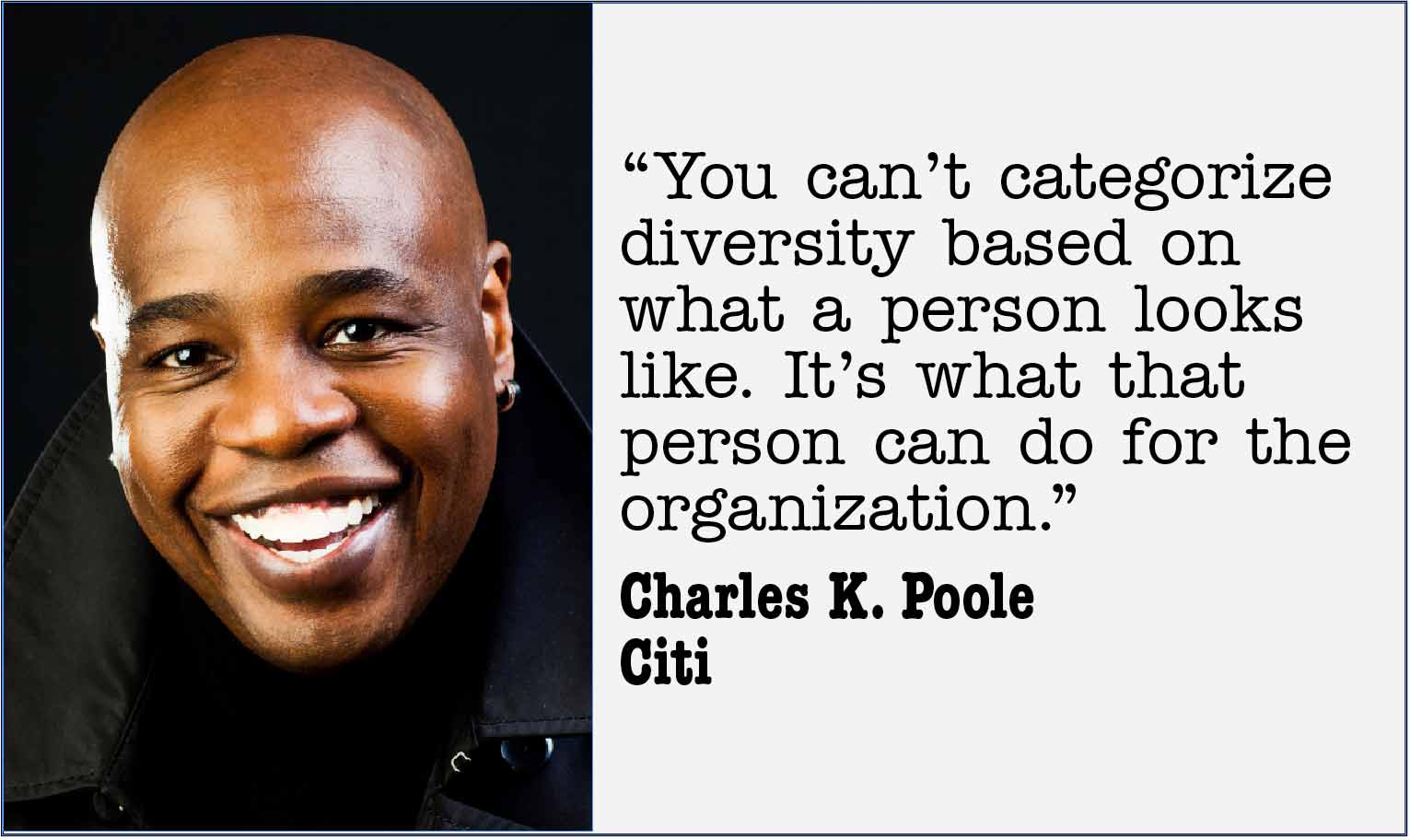All national political conventions have their moments—good, puzzling and just plain bad. At the Republican National Convention in Tampa, Fla., Mitt Romney’s wife, Ann, gave an impassioned speech that just may have humanized her husband in the eyes of the American public. Then, special guest Clint Eastwood wowed some and perplexed others with his conversation with a chair. Finally, there was the horrific incident involving a CNN camera person: Reportedly two attendees threw peanuts at the African-American woman and said “this is how we feed the animals.” Ugly to be sure. The peanut-throwing incident wasn’t the only time when race became an issue at the convention. While the Republicans ensured women and minorities—particularly Hispanics—were represented on the stage, the lack of diversity among the delegates was noticeable, prompting a snarky Twitter handle crafted by singer Clay Aiken that drew national attention.
 |
Diversity is a subject that some might feel shouldn’t need to be discussed in the 21st century. But while diversity and inclusion strides have been made in Corporate America, there’s significant room for improvement, says Charles K. Poole, senior VP, internal/external communications at Citi. “There is no doubt great strides have been made,” says Poole. “But just like anything else, more can be done.”
Before looking into what more organizations can do regarding diversity, let’s look at some statistics: People of color make up nearly one-third of the workforce, reports the Bureau of Labor Statistics. Yet there is a startling lack of diversity in corporate boardrooms. According to the Center for American Progress’ July, 2012 report, among Fortune 500 CEOs, only 21 are people of color— that’s just 4.2%.
DIVERSITY’S VALUE
Organizations are missing out on the advantages diversity brings—the value of which cannot be measured by raw numbers, says Poole. The real value comes from bringing diversity of thought and talent into the fold. “You can’t categorize diversity based on what a person looks like,” says Poole. “It’s what that person can do.”
And that points directly to the business side of the equation. “Organizations need to drive the efforts of diversity from a ‘program’ into becoming part of the way they do business,” says Joe Santana, an executive diversity and inclusion consultant. And that concept is a reality at CVS Caremark, where according to David L. Casey, the company’s chief diversity officer, diversity is a top-down priority of its leadership. In fact, CVS Caremark leverages diversity as a market differentiator. “It’s not just enough to have diversity, it’s about managing diversity just as you would any other strategic asset,” says Casey.
SELF-REFLECTION
Tackling diversity is a challenge, and takes much organizational—and self—reflection, says Santana. “Companies must analyze how their current state of diversity is impacting their business,” he says. Once that is determined, it’s simply not enough to just “get it.”
“Even when leadership realizes the value of it, that doesn’t mean they are going to start behaving differently,” says Santana. Talk about how organizations consider themselves to be meritocracies can sometimes be just that—talk.
BRIDGING THE GAP
To walk the walk, it’s about bridging cultural gaps, says Sonia Sroka, senior VP, director of Hispanic marketing at Porter Novelli. Here are four suggestions from Sroka on how to approach diversity:
• Have a clear understanding about diversity and inclusion in your organization;
• It’s about a diversity of ideas and experience, not just race, ethnicity or gender;
• Efforts should be driven by executives and not housed as HR function; and
• Consider your efforts more than just a feel-good exercise.
Casey says one of the biggest challenges is for organizations to quantify the value of diversity to their corporate cultures. But an equal challenge is having diversity programs result in real employee satisfaction and engagement, and to turn it into an ethos that permeates the workplace.
PR, ORGANICALLY
From a communications standpoint, Poole is wary of PR programs that tout diversity in a big way, internally or externally. “That makes diversity more of the exception, rather than the rule,” he says. Poole believes that for a diversity movement to be successful, it should be subtle, and start with the engagement level of employees. “Everyone must engage with each other beyond just words,” he says. Thus, putting people in teams and asking them to work together frees them up for “organic interaction,” says Poole. “You must show your employees a way to find their own paths toward diversity.” Which means, says Poole, more bottom-up efforts in an organization to achieve diversity organically, and less top-down directives that may water down your efforts.
CVS Caremark has seen success with PR around diversity. While acknowledging that resonance with the public and employees around the issue is hard to measure, anecdotally a video about the company’s commitment to diversity was well received at a National Urban League Convention, where people reportedly stopped and watched it from start to finish.
“We see that our diversity story matters to our equally diverse customer base and the communities in which we operate across the country,” says Casey (see the sidebar for his steps toward achieving diversity in your organization).
In any case, the subject of diversity can be daunting. “Our brain is wired for living in a society different from today, in which we’re shoulder to shoulder with people who view the world differently,” says Santana. “We need to evolve our behavior to a new level to get the best outcomes.” PRN
CONTACT:
Sonia Sroka, [email protected]; David L. Casey, [email protected]; Charles K. Poole, [email protected]; Joseph Santana, [email protected].
Follow Scott Van Camp: @svancamp01
